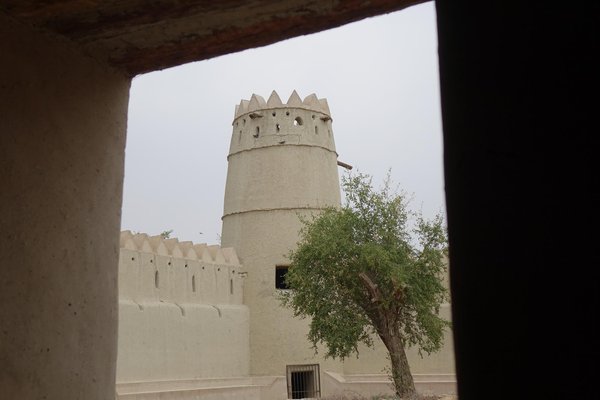United Arab Emirates
Al Ain
Cultural Sites of Al Ain: Hafit, Hili, Bidaa Bint Saud and Oases Areas are archeological sites representing sustainable human development in the desert since prehistory.
The Bronze and Iron Age remains show how a fertile environment was created on the Arabian Peninsula suitable for sedentary human occupation. The 17 locations include stone tombs, partially underground aflaj irrigation systems, oases, and mud-brick constructions.
Community Perspective: the sites are scattered around the heavily urbanised city of Al Ain. With a rental car they can be visited within one day if you plan well, some are also accessible by public transport. Worth visiting are the Al Ain National Museum with the Sultan Fort and the Al Ain Oasis next door, and the photogenic Al Jahili Fort. Solivagant, in his review, elaborates on the site’s somewhat disputed inscription.
Site Info
Official Information
- Full Name
- Cultural Sites of Al Ain: Hafit, Hili, Bidaa Bint Saud and Oases Areas (ID: 1343)
- Country
- United Arab Emirates
- Status
-
Inscribed 2011
Site history
History of Al Ain
- 2011: Advisory Body overruled
- ICOMOS advised a Deferral, for " definition and the selection of the serial components and to focus them on a main theme and/or a more coherent and better defined period"
- 2011: Inscribed
- Inscribed
- 2010: Incomplete - not examined
- Type
- Cultural
- Criteria
- iii
- iv
- v
Links
- UNESCO
- whc.unesco.org
- Official
-
- tamm.abudhabi — Al Ain Oasis
- tamm.abudhabi — Al Hilli Archaelogical park
- Related
-
- sophiesworld.net — Al Ain on a daytrip from Dubai
- ardmediathek.de — Schätze der Welt: Die Oase Al Ain
All Links
UNESCO.org
- whc.unesco.org — whc.unesco.org/
Official Website
- tamm.abudhabi — Al Ain Oasis
- tamm.abudhabi — Al Hilli Archaelogical park
Forum Discussion
- worldheritagesite.org — Al Ain - Al Jahili Fort
Related Resources
- sophiesworld.net — Al Ain on a daytrip from Dubai
- ardmediathek.de — Schätze der Welt: Die Oase Al Ain
News Article
- Feb. 17, 2020 arabianbusiness.com — Al Ain opens new archeological tourist attraction
- May 30, 2019 gulfnews.com — 3,000-year-old fingerprints found at Al Ain’s World Heritage Site
- Nov. 15, 2015 gulfnews.com — Qasr Al Muwaiji opens as a museum in Al Ain
Community Information
- Community Category
- Archaeological site: Near Eastern
Travel Information
Recent Connections
-
Hunter-gatherers
The property provides important testimo… -
UNESCO Intangible Cultural Heritage Lists
Date palm, knowledge, skills, tradition… -
Globally Important Agricultural Heritage Systems (GIAHS)
Al Ain and Liwa Historical Date Palm Oa…
Connections of Al Ain
- Individual People
-
-
Sir Wilfred Thesiger
"Thesiger's travels frequently took him through the emirate, through the southern oasis of Liwa, through the capital city, and to Al Ain itself, where he formed an enduring friendship with Sheikh Zayed, the future ruler of Abu Dhabi and the 'father' and first president of the United Arab Emirates." See:
-
- Geography
-
-
On National Border
With Oman -
Disputed territories
Saudi Arabia claimed a large part of Abu Dhabi territory including the Buraimi Oasis where Al Ain is situated. Fighting took place in the 1950's involving the Trucial Oman Scouts - the British organised paramilitary unit for the "Trucial states. Saudi forces and supporters were expelled. In 1974 the Treaty of Jeddah was negotiated and Saudi in effect withdrew its claim but gaining elsewhere. UAE has never ratified this treaty.
-
- Trivia
-
-
On Banknotes
Al Jahli Fort, on 50 dirham note
-
- History
-
-
Neolithic age
"mobile hunter-gatherer groups of the Neolithic period (6th millennium to 4th millennium BC in Al Ain) with remains discovered alongside the eastern ridge of Jebel Hafit" (AB ev) -
Iron Age
"Iron Age settlement at Hili Archaeological Park" (AB ev) -
Bronze Age
round tombs of the Hafit culture
-
- Architecture
-
-
Earth Architecture
mud brick constructions
-
- World Heritage Process
-
-
First inscriptions
UAE 2011 -
Cultural landscape not recognized
Nominated as such, no clear stand from ICOMOS (because negative about the OUV of it all) -
Slow Starters
2001-2011 : 10 years
-
- Human Activity
-
-
Irrigation and drainage
Use of aflaj -
Hunter-gatherers
The property provides important testimony to the transition of cultures in the region from hunting and gathering to sedentarization. (official description)
-
- Constructions
-
-
Necropolises
Al Naqfa Ridge Tombs, with the remains of a necropolis -
Tombs
Several
-
- WHS on Other Lists
-
-
Globally Important Agricultural Heritage Systems (GIAHS)
Al Ain and Liwa Historical Date Palm OasesSee www.fao.org
-
UNESCO Intangible Cultural Heritage Lists
Date palm, knowledge, skills, traditions and practices (2019) - Al Ain named in nomination among UAE representatives; Al Aflaj, traditional irrigation network system in the UAE, oral traditions, knowledge and skills of construction, maintenance and equitable water distribution (2020)See ich.unesco.org
-
- Timeline
-
-
Built in the 3rd Millennium BC
"The Cultural Sites of Al Ain trace the evolution of society in that part of the world from mobile hunter-gatherer groups of the Neolithic period (6th millennium to 4th millennium BC in Al Ain) with remains discovered alongside the eastern ridge of Jebel Hafit, to small- scale farming communities (3rd millennium BC Bronze Age communities)"
-
- Visiting conditions
News
- arabianbusiness.com 02/17/2020
- Al Ain opens new archeological tou…
- gulfnews.com 05/30/2019
- 3,000-year-old fingerprints found …
- gulfnews.com 11/15/2015
- Qasr Al Muwaiji opens as a museum …
Recent Visitors
Visitors of Al Ain
- Adrian Turtschi
- Afshin Iranpour
- Alexander Barabanov
- Alexander Lehmann
- Alexander Parsons
- Ali Zingstra
- Aljaz
- A. Mehmet Haksever
- Ammon Watkins
- Artur Anuszewski
- Atila Ege
- BaziFettehenne
- Bernard Joseph Esposo Guerrero
- Bill Koo
- Bin
- Boj
- Bram de Bruin
- Carrascu
- chenqtao
- Cheryl
- Christoph
- Christravelblog
- Clyde
- Csaba Nováczky
- CugelVance
- Daniel Chazad
- Dimitar Krastev
- disnsam
- Dorejd
- Dwight Zehuan Xiao
- Els Slots
- Errol Neo
- Eva Kisgyorgy
- Fan Yibo
- Femke Roos
- Fmaiolo@yahoo.com
- futtaimhb
- Garrett
- George Gdanski
- Gernot
- Harald T.
- Harry Mitsidis
- henryjiao18
- Iain Jackson
- Ivan Rucek
- Janos
- Jay T
- Jeanne OGrady
- Jezza
- John Smaranda
- jonathanfr
- Jonoprout
- Joyce van Soest
- Karito Vies
- Kbecq
- KeithBailey
- Ken DJ
- Kevin McFarland
- Kim, Soo-youn
- Knut
- Kyle Magnuson
- Loic Pedras
- Luis Filipe Gaspar
- Luke LOU
- Maciej Gil
- Malgorzata Kopczynska
- marcel staron
- MarcoB_0
- Martina Rúčková
- Michael Novins
- Mihai Dascalu
- Mikko
- Milan Jirasek
- Miloš Tašković
- Mohboh
- Mstrebl1990
- MWaters66
- NH1984
- Nihal Ege
- Olli-Pekka Turunen
- PabloNorte
- Patrik
- Philipp Peterer
- Piotr Wasil
- Rachel Perkins
- Ralf Regele
- Randi Thomsen
- Reza
- Rick Ohm
- rivr
- Rob Wilson
- Rodinia
- Roger Ourset
- Roman Raab
- Sandmann15
- serghei.belous
- Sergio Arjona
- Solivagant
- Stanislaw Warwas
- Svein Elias
- Szabolcs Mosonyi
- Szucs Tamas
- Tamara Ratz
- Taotao Chen
- Tarquinio_Superbo
- Thomas Buechler
- Thomas van der Walt
- Timothy C Easton
- triath
- Valentina
- Vernon Prieto
- VMThumper
- Wojciech Fedoruk
- Wo_ko
- Xiquinho Silva
- Yongcheng Liu
- Zach
- Zhenjun Liu
- Zoë Sheng
Community Reviews
Show full reviews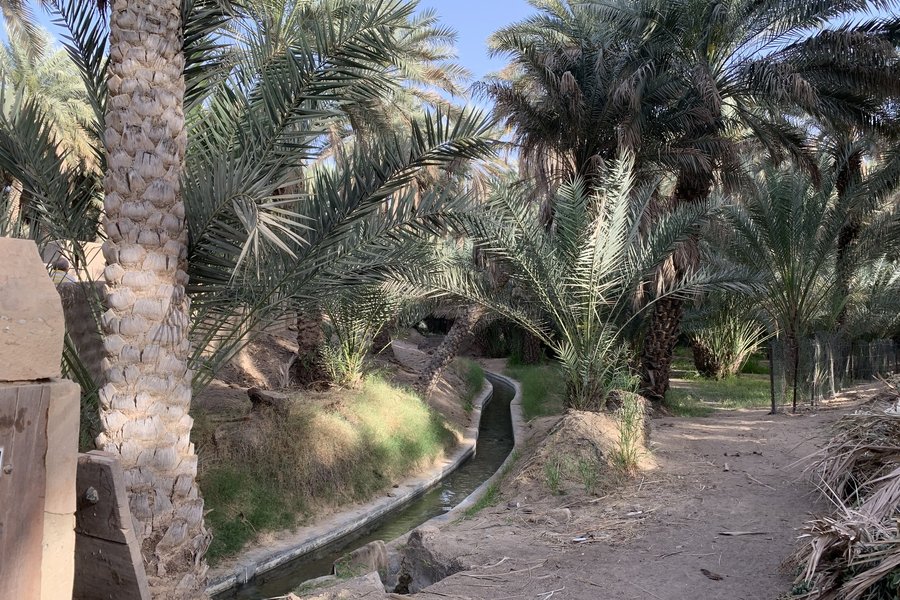
I grew up in Al Ain for 15-or-so years, so I decided to compile a list of the UNESCO locations in Al Ain, categorised by type, with additional locations in and around them that may be of interest.
Locations in bold are part of the inscribed UNESCO WHS (on the official website) and those in italics are not accessible using Al Ain's bus system (so you'd have to drive or take a taxi). Some may require a 20-minute walk from the nearest bus stop, so be mindful of the heat!
I no longer live in the UAE so information could grow outdated over time.
SUMMARY (TL;DR):
- Al Ain Oasis for an oasis
- Al Ain Palace Museum for some royalty
- Beehive Tombs for tombs
- Hili Archaeological Park for more tombs
- Qasr Al Muwaiji for a fort with a museum
- Jahili Fort for a fort with cultural events (check visitabudhabi's Events page)
- Mubazzarah and Jebel Hafeet for a relaxed day out
- Qattara and Jimi Oases for more secluded forts, more oases and more events
- Check to see if Bidaa Bint Saud ever opens. I'd be curious to know
OASES:
- Al Ain Oasis - The main, central oasis. Free to enter (as is all oases), it not only provides examples of Aflaj (ancient irrigation system, like in Oman's WHS), but it acts as a shortcut between Al Ain Museum and Al Ain Palace Museum, all while the palm trees shade you from the scorching Sun, its thin prongs allowing some sun-rays to gleam …
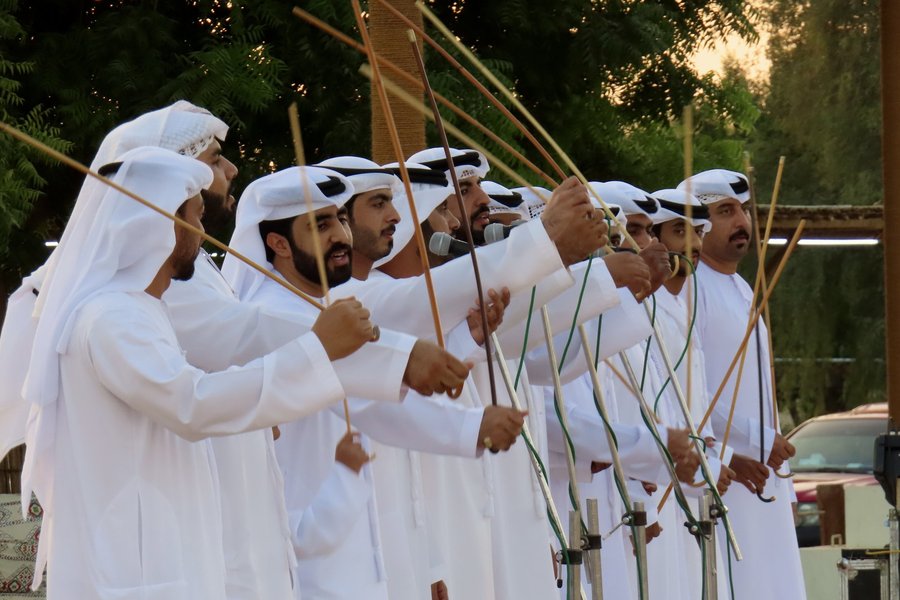
After visiting the archaeological sites around Mleiha, I was not keen on searching out more of them in Al Ain, particularly since the sites in Al Ain range through various periods all the way to the Iron Age. So in fact there is some overlap, though the "Hafit, Hili, Bidaa Bint Saud" inscribed components in Al Ain mostly come from an earlier period. I felt their story has some connection to each other, perhaps a "theme" providing a rich archaeological record of settlement in the UAE as a crossroads of trade and early adaption to the environment. Whereas I could access all the sites in Mleiha by an excellent tour, the sites in Al Ain primarily require taxi or rent a car, therefore I focused exclusively on the Oasis components.
How the 'Cultural Sites of Al Ain' world heritage site is organized was critiqued by ICOMOS:
"ICOMOS considers that the nominated elements form ensembles which are too disparate to be able to qualify the serial as having integrity. The landscapes associated with the seventeen components of the property are numerous, and of unequal meaning and integrity."
The six oasis components and all of the numerous historical sites within them are primarily from the early 19th century to the early 20th century. In my non-expert opinion, they should have been inscribed alone. The archaeological sites at the Hafit, Hili, Bidaa Bint Saud areas which have tenuous connections to the oasis sites at best should have been inscribed separately along with a …
Keep reading 0 comments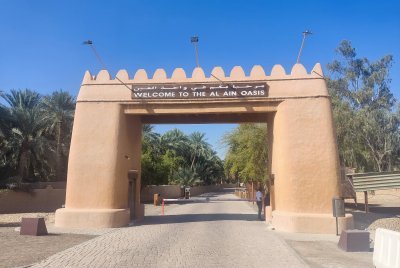
I visited the al ain oasis on the 20th of january 2023. I took the bus from Abu Dhabi's central bus station to Al Ain where I arrived around 2 hours later. I just walked from the bus station to the al ain national museum which was -unfortunetely-closed due to renovation works. I then walked to the nearby entrance of the oasis where a group of argentine soccer fans from Puerto Rico asked me to take a picture of them. Truly a funny situation.There are hardly any tourists in Al Ain,and I met a bunch of argentine soccer fans. Since I speak spanish I joined them and we walked together through the oasis. I learnt a little bit about life in puerto rico and their beloved club racing buenos aires.Two days later I learnt that their team racing had won 2-1 vs Boca Juniours in al ain.
Together we walked through the entire oasis till we arrived at the exit/entrance where the restaurants are located. The argentines had to leave due to lack of time. I for my part rented a bike for an hour and raced through the oasis once again taking every turn and discovering every inch of the oasis,so to speak.
I even managed to ride to the al ain palace,convincing the soldiers there to leave my bike just in front of their guard house(forbidden,but hey I am a foreign visitor.....besides I didnt have a lock for my rented bike). I rushed through that palace …
Keep reading 0 comments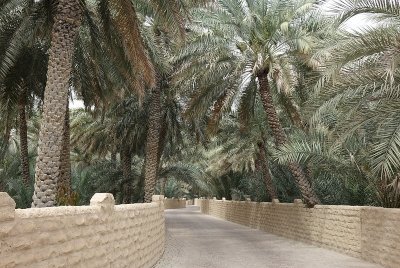
Al Ain is the second city in the Emirate of Abu Dhabi, a pretty large one with over 750,000 inhabitants. It actually lies closer to Dubai than to its own capital, Abu Dhabi. I had somewhat underestimated these distances during my trip planning and also wanted to see the recently opened Louvre museum and the Sheikh Zayed Grand Mosque in Abu Dhabi. So I cut my visit to Al Ain short to the Al Ain Oasis and National Museum to fit it all into a day trip from Dubai.
The oasis and national museum comprise only 1 out of the 17 inscribed Cultural Sites of Al Ain. Both places are very conveniently located next to the bus station of Al Ain, which is served every 30 minutes or so by comfortable direct buses from Dubai’s Al Ghubaiba Bus Station. The oasis is easy to see near the bus station, and the national museum is signposted.
I started at the museum, which charges a 3 dirham entry fee. At 0.66 EUR this is only a nominal sum, comparable to the fees I paid at similar sites in Oman. I guess these public museums are heavily subsidized by the government. I never encountered many visitors, often I was the only one. This museum is quite interesting, displaying mainly the archaeological findings (lots of pottery) from the various Al Ain locations such as Hilli.
I peeked into the old Sultan Fort next door as well, but they were busy with …
Keep reading 0 comments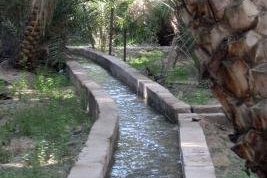
The Cultural Sites of Al Ain are currently the only World Heritage Site in the United Arab Emirates, though hopefully more will be inscribed in future years. One of the largest components in this inscription is the Al Ain Oasis, easily accessible in the center of town. I visited this oasis in September 2012, as the date harvest was under way. Workers were sorting dates on the oasis grounds, and one of the workers gave a demonstration of how they climb the trees to reach the date bunches. As I wandered through the grounds I had to cross several times over the network of water channels fed by underground tunnels that compose the "aflaj" irrigation system. The shade of the oasis was a welcome relief from the desert heat, and I quite enjoyed my time there. Once I left the oasis, I visited the nearby Al Ain National Museum, where I learned more about the history of the region, from early nomadic lifestyles to the oil boom of the present. Like other reviewers, I also took a trip to the top of Jebel Hafeet, which provided a great view of Al Ain and neighboring Oman.
Logistics: Al Ain Oasis is within walking distance from the center of town, but a car is necessary to reach other inscribed locations outside downtown.
Keep reading 0 comments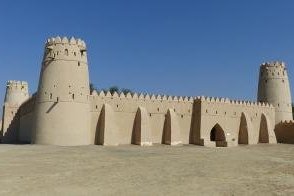
I visited this WHS in January 2015. It's made up of a series of sites 1.5-2hrs away from Dubai and it makes for an interesting day trip if planned well and visited by rental car. Driving is definitely no problem with a straight 6 lane highway and the GPS navigator was merely necessary to visit the different sites while I got to Al Ain. The first site I visited was Jebel Hafeet and although it is a great way to enjoy a panoramic view of Al Ain and several tombs along the way. However the remains of what was found in the tombs can be appreciated in the Al Ain National Museum not to be confused with the less interesting Al Ain Palace Museum. The Al Ain National Museum costs 3 dirhams to visit but is definitely worth visiting to get a detailed overview of the different forts and watchtowers around Al Ain and also a collection of artefacts and pottery found in the tombs. The Al Ain National Museum also houses the Sultan Fort and just next to the entrance one can access the Al Ain Oasis for a lovely walk in the shade provided by the numerous date palm trees irrigated with the "aflaj" system. Next I visited the splendid and photogenic Al Jahili Fort. The fort is open everyday except on Mondays and it houses an interesting photo exhibition. There's nothing special inside left to visit but I enjoyed the overall structure and watchtower housed within the …
Keep reading 0 comments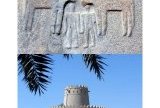
What prior image do most of us carry of an “oasis” site like Al Ain? Sand, palm trees, donkeys, camels? Well, as the photos in the main museum there show, Al Ain was indeed like that in the early 1960s but nowadays, with a population of over half a million it spreads out across some 40 sq kms, connected by a network of 6 lane highways with roundabouts every 2 or 3 kms where “devil takes the hindmost” among the speeding crowded traffic!
We realised of course that UAE had developed significantly over the past 50 years. The “wonder” of modern Dubai was well known to us but I had perhaps not realised the extent to which this development had spread inland to Al Ain (which is part of the state of Abu Dhabi). The place was known to me long before it gained WH inscription as I am a “collector” of locations where somewhat bizarre historical events have occurred and Al Ain is one of these. In 1952 it was the site of a military stand-off involving Saudi Arabia (SA) and UK in which SA was backed by the US! With Arabian frontiers not fully defined at that time, SA moved soldiers to the Oasis of Buraimi to enforce its historic claim on the area also claimed by the Sheiks of Oman and Abu Dhabi. UK had treaties of protection with both Oman and Abu Dhabi and “officered” their troops and looked after foreign relations. In the end SA …
Keep reading 0 comments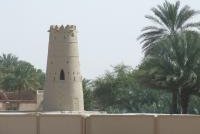
The listed locations of this site are to be found within as well as in the areas surrounding the modern city of Al Ain. Jebel Hafeet, a huge monolith stands to the south of the city, while Bida Bint Saud lies to the north, not far from the suburb of Hili which itself has several archaeological sites. These peripheral sites are easily accessible by road.
The oases, each with its date palm plantations, aflaj, watchtowers and protective fort are within the city and are accessible by local bus services.
Keep reading 0 comments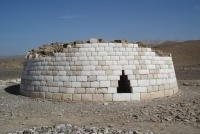
My first impression of this site is of a modern city set out in a grid pattern divided by six lane dual carriageway boulevards. Although there are numerous multi-storey buildings, there are none on the scale of Dubai or Abu Dhabi city.
But on closer inspection it is not difficult to find places of local heritage. The ancient Hafeet tombs can be found in several locations around the city, besides the slopes of Jebel Hafeet. I found some small circular stone tombs on a hillside near the Al Ain zoo which are particularly well preserved and accessible. Other larger ones were visible at Bida Bint Saud, near Hili and on the edge of the red sand dunes. I have seen other more elaborate types of tomb in the Hili Archaeological Park.
Jebel Hafeet, a gigantic monolith that sits on the desert floor straddling the UAE/Oman border to the south of the city, reminds me of a rougher version Ayers Rock/Uluru in central Australia. This mountain has lost some of its integrity however due to the presence of a huge palace, a resort hotel and a restaurant.
The present day city is located on the site of six wells/oases, the largest of which is Al Ain in the city centre, while others like Al Muraibi, Al Murabba, Al Jimi and Al Quattarah are in the suburbs. Each has its mud-brick walled date plantations and aflaj irrigation systems. They are each protected by watchtowers and a fort, most of which have recently …
Keep reading 0 comments
